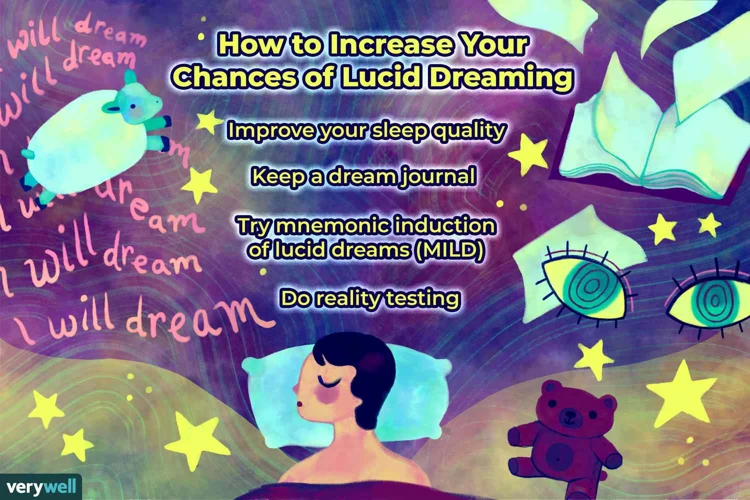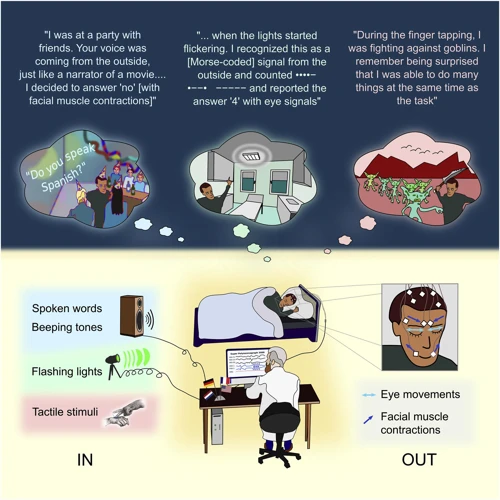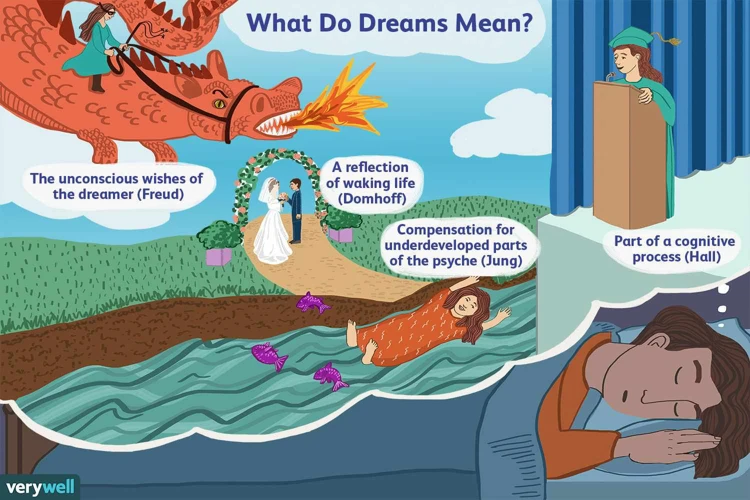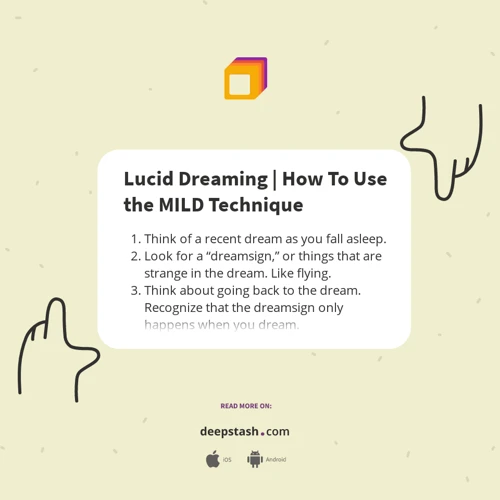What if there was a way to tap into the power of our dreams to solve complex problems? The phenomenon of lucid dreaming offers a fascinating avenue for doing just that. Lucid dreaming is the state of being aware that you are dreaming while still in the dream itself. It provides a unique opportunity to explore and utilize the depths of our subconscious mind to tackle intricate challenges. But how exactly does it work? In this article, we will delve into the science behind lucid dreaming and its potential to help solve complex problems. Along the way, we will uncover the connection between lucid dreaming and problem-solving, explore the scientific explanations behind this connection, learn techniques to induce lucid dreaming, and discover real-life applications and success stories. So, let’s dive into the world of lucid dreaming and unlock its secrets to unleashing our problem-solving abilities.
Understanding Lucid Dreaming

Lucid dreaming is a phenomenon that occurs during rapid eye movement (REM) sleep, the stage of sleep when most vivid dreaming occurs. What sets lucid dreaming apart is the awareness that you are dreaming while in the dream itself. This level of self-awareness allows the dreamer to have some control over the dream narrative and the ability to make conscious choices within the dream environment. It’s like stepping into a virtual world where you are both the creator and the protagonist, with the ability to shape the dream scenarios to your liking. This state of consciousness offers a unique opportunity to explore and interact with the subconscious mind, as well as experience vivid sensory perceptions and emotions that can feel as real as waking life. Understanding the intricacies of lucid dreaming can help unlock its potential for various applications, such as personal growth, problem-solving, and even creative inspiration. To dive deeper into the benefits of lucid dreaming, check out our article on the benefits of lucid dreaming. Additionally, if you want to explore how visualization can be utilized in lucid dreaming for self-improvement, our article on visualization in lucid dreaming provides valuable insights. Lastly, if you’re interested in learning more about specific techniques to induce lucid dreaming, we recommend checking out our comprehensive guide on exploring lucid dreaming techniques. Lucid dreaming is a captivating and complex subject that holds immense potential for personal exploration and problem-solving, so let’s delve further into the connection between lucid dreaming and problem-solving abilities.
The Connection Between Lucid Dreaming and Problem Solving

The connection between lucid dreaming and problem solving lies in the ability to access and utilize the vast resources of our subconscious mind. During lucid dreaming, we are not bound by the limitations of the waking world. We can tap into our creativity, imagination, and intuition in ways that are often inhibited during our conscious state. Lucid dreams provide a safe and controlled environment where we can confront and explore complex problems from various angles and perspectives. They offer a playground for experimentation, where we can test out different solutions and scenarios without fear of failure or judgment. The heightened emotional experiences in lucid dreams can provide valuable insights into the underlying motivations and emotions tied to the problems we are trying to solve. By actively engaging with the dream environment, we can generate innovative ideas, make connections that may not be obvious in our waking state, and challenge conventional thinking. The cognitive flexibility and problem-solving skills cultivated during lucid dreaming can have a profound impact on our ability to tackle real-world challenges. So, let’s delve deeper into the scientific explanations behind the power of lucid dreaming in problem solving.
The Scientific Explanation

The scientific explanation behind the connection between lucid dreaming and problem-solving lies in several key factors. Firstly, brain activation and creativity play a significant role. During lucid dreaming, the brain exhibits an increased level of activity in the prefrontal cortex, which is responsible for higher cognitive functions such as problem-solving, decision-making, and creative thinking. This heightened brain activity allows for enhanced creative problem-solving capabilities within the dream state. Secondly, lucid dreaming provides a unique opportunity to access the subconscious mind. The dream environment serves as a gateway to the deeper layers of our psyche, where memories, emotions, and experiences are stored. By tapping into the subconscious, lucid dreamers can gain insights, access stored knowledge, and unlock innovative solutions to complex problems. Lucid dreaming also enhances neuroplasticity, the brain’s ability to reorganize and form new connections. This facilitates the integration of new information and problem-solving skills developed during lucid dreaming into our waking life. Finally, lucid dreaming promotes emotional regulation and decision-making. By consciously experiencing and navigating emotions within dreams, individuals can develop a greater understanding of their emotional reactions and make more informed decisions in their waking life. The scientific understanding of these factors sheds light on how lucid dreaming can be a powerful tool for problem-solving and personal growth.
1. Brain Activation and Creativity
One of the key scientific explanations behind the connection between lucid dreaming and problem-solving lies in the activation of the brain during the dream state. Research has shown that when we are lucid dreaming, certain areas of the brain associated with creativity and problem-solving become highly active. The prefrontal cortex, responsible for executive functions such as decision-making and cognitive control, shows increased activity during lucid dreaming. This heightened activation allows for enhanced creativity and the ability to think outside the box.
Lucid dreaming stimulates the activation of the dorsolateral prefrontal cortex, a region involved in working memory and the integration of information from different brain areas. This activation facilitates better connectivity between brain networks, leading to improved cognitive abilities, including problem-solving skills.
In addition to these brain activation effects, lucid dreaming also allows for the vivid visualization of scenarios and objects. This aspect plays a crucial role in problem-solving, as it enables dreamers to mentally simulate different scenarios and explore potential solutions in a highly immersive and realistic manner. By harnessing the power of visualization, individuals can think visually in their dreams, which can promote innovative thinking and novel problem-solving strategies.
The brain activation and creative potential unlocked during lucid dreaming provide a fertile ground for tackling complex problems and coming up with unique solutions. In the next section, we will delve into another fascinating aspect of lucid dreaming: accessing the subconscious mind.
2. Accessing the Subconscious Mind
Accessing the subconscious mind is a key aspect of lucid dreaming and plays a vital role in problem-solving abilities. During normal waking consciousness, our conscious mind is often preoccupied with daily tasks and external stimuli, while the subconscious mind remains largely untapped. However, in the realm of lucid dreaming, we have a direct pathway to tap into the vast resources of the subconscious.
When we enter a lucid dream, we are able to bypass the filters and limitations of the conscious mind, allowing us to delve deep into the realm of the unconscious. This access to the subconscious mind can bring forth valuable insights and information that may not be readily available to us in our waking state.
In a lucid dream, we can pose specific questions or present complex problems to our subconscious mind. Through the power of intention and focused awareness, we can receive answers and solutions that may elude us in our waking life. This phenomenon can be attributed to the fact that the subconscious mind has access to a vast reservoir of knowledge and experiences that we may not consciously recall.
To effectively access the subconscious mind, it is important to cultivate a strong intention before entering a lucid dream. Setting a clear goal or problem to solve can direct the focus of the subconscious mind towards finding a solution. Techniques such as visualization, affirmations, and meditation before sleep can help in formulating conscious intentions that guide the dream experience towards problem-solving.
Once in a lucid dream, techniques like engaging with dream characters, exploring dream scenery, or even asking the dream itself for guidance can facilitate communication with the subconscious mind. By actively engaging with the dream environment and maintaining lucidity, we can unlock the potential of our subconscious mind and tap into its hidden reserves of knowledge and creativity.
Accessing the subconscious mind in lucid dreams is like unlocking a treasure trove of untapped potential. It provides us with a unique opportunity to gather insights, think outside the box, and explore alternative solutions to complex problems. By harnessing the power of lucid dreaming to access the subconscious mind, we can expand our problem-solving abilities and open up new pathways for personal growth and development.
3. Enhancing Neuroplasticity
Neuroplasticity refers to the brain’s ability to reorganize and form new neural connections throughout our lives. It is a fundamental process that underlies learning, memory, and adaptability. In the context of lucid dreaming, there is evidence to suggest that it can enhance neuroplasticity and promote neural growth. During lucid dreams, the brain is in a highly active and responsive state, with various regions and neural networks engaged in creating and maintaining the dream experience. This heightened brain activity during lucid dreaming can stimulate the release of certain neurotransmitters and growth factors that support neuroplasticity. It is believed that the conscious awareness and control experienced in a lucid dream can positively impact the brain’s ability to reorganize itself and make new connections. This enhanced neuroplasticity may facilitate problem-solving abilities by allowing the brain to approach complex challenges from different perspectives and rewiring neural pathways accordingly. Research has shown that individuals who regularly engage in lucid dreaming exercises may experience improvements in cognitive functions, creativity, and problem-solving skills in their waking lives. Lucid dreaming not only provides an exciting and immersive experience but also offers the potential to enhance neuroplasticity and boost problem-solving capabilities.
4. Emotional Regulation and Decision Making
Emotional regulation and decision making are two crucial aspects of problem-solving, and they are also connected to the practice of lucid dreaming. During a lucid dream, individuals have the unique opportunity to explore and address their emotions in a controlled and safe environment. They can consciously engage with the emotions that arise within the dream and explore different ways of regulating and managing them. This can be particularly beneficial for individuals who struggle with emotional challenges in their waking life. By practicing emotional regulation techniques within the dream, they can develop skills to effectively manage their emotions in real-life situations. Additionally, lucid dreaming provides a platform for making decisions and experiencing their consequences without real-world implications. This offers a valuable training ground for evaluating different options, weighing the potential outcomes, and honing decision-making skills. By exploring and resolving emotional conflicts within the dream state, individuals may experience improved clarity and objectivity when making decisions in their waking life. Lucid dreaming serves as a playground for developing resilience, emotional intelligence, and decision-making abilities, ultimately aiding in problem-solving outside the realm of dreams.
Techniques to Induce Lucid Dreaming

To induce lucid dreaming, there are various techniques that can be employed. One popular method is reality testing, which involves regularly asking yourself throughout the day, “Am I dreaming?” By making this a habit, you train your mind to perform the same question in your dreams, increasing the likelihood of becoming lucid. Another technique is keeping a dream journal, where you record your dreams in detail as soon as you wake up. This practice helps improve dream recall and can reveal patterns or dream signs that may indicate when you are dreaming. By identifying these signs, you can become more aware of your dream state. Another effective approach is known as Mnemonic Induction of Lucid Dreams (MILD), developed by Dr. Stephen LaBerge. With this technique, you set an intention to remember that you are dreaming while repeating a phrase like, “I will be aware that I’m dreaming.” This repetition as you fall asleep helps to reinforce the intention in your subconscious mind, increasing the chances of becoming lucid. Another method is Wake Induced Lucid Dreaming (WILD), where you aim to transition from wakefulness directly into a lucid dream state. This technique requires entering a state of deep relaxation while maintaining awareness as your body falls asleep. It can be challenging, but with practice, it can lead to more frequent and vivid lucid dreaming experiences. Exploring and experimenting with these techniques can help individuals develop their ability to induce lucid dreams and unlock the potential they hold for problem-solving.
Developing Problem-Solving Skills in Lucid Dreams
Developing problem-solving skills in lucid dreams can be an exciting and effective way to tackle complex challenges. In the realm of lucid dreaming, the limitations of the physical world no longer hold us back, allowing our creativity and problem-solving abilities to thrive. Here are some practical steps to develop problem-solving skills in lucid dreams:
1. Set Intentions: Before going to sleep, set a clear intention to solve a specific problem or gain insights on a particular issue within your lucid dream. This intention will guide your subconscious mind and increase the likelihood of obtaining relevant information.
2. Explore Symbolism: Dreams often present information symbolically. During a lucid dream, pay attention to any symbols, images, or metaphors that arise. Analyze their potential meanings and how they relate to your problem. This can provide valuable insights that may not be apparent in waking life.
3. Engage in Dialogue: Interact with dream characters or even inanimate objects to seek guidance or answers. Engaging in conversation or asking direct questions can elicit responses that offer new perspectives on your problem.
4. Experiment with Different Approaches: In a lucid dream, you have the freedom to try out various solutions and approaches without the fear of failure or consequences. This allows you to explore unconventional ideas and test their outcomes, stimulating your creativity and expanding your problem-solving repertoire.
5. Visualize and Manipulate: Utilize the power of vivid visualization within your lucid dream. Envision the problem or challenge and visually manipulate it to explore different scenarios and potential solutions. This visualization technique can provide a deeper understanding of the problem and ignite innovative insights.
6. Reflect and Document: Upon waking up, take time to reflect on your lucid dream and document any insights or solutions that emerged. Recording your experiences and observations will help consolidate the information and reinforce your problem-solving skills over time.
Remember, developing problem-solving skills in lucid dreams is a process that requires practice and patience. With persistence and a curious mindset, you can harness the boundless potential of your dreams to tackle complex problems and unlock new perspectives.
Real-Life Applications and Success Stories
Real-Life Applications and Success Stories
Lucid dreaming has garnered attention not only among dream enthusiasts but also in various fields where problem-solving is crucial. The ability to harness the power of lucid dreaming has led to exciting real-life applications and success stories. Let’s explore some of these applications and hear about the experiences of individuals who have utilized lucid dreaming for problem-solving:
1. Scientific Discoveries: Lucid dreaming has been used as a tool for scientific research, particularly in studying the intricacies of the dreaming mind and consciousness. Researchers have been able to gather valuable insights into the brain’s functioning during lucid dreams, shedding light on the neurobiology of consciousness.
2. Creative Inspiration: Many artists, musicians, and writers have reported using lucid dreaming as a means to tap into their creativity. By exploring the vast landscapes of their dreams, they have gained inspiration for their artistic endeavors. Lucid dreaming allows them to simulate scenarios, experiment with ideas, and visualize concepts, fueling their creative pursuits.
3. Problem-Solving: Lucid dreaming offers a unique space for problem-solving. By actively engaging with the dream environment, individuals can confront challenges head-on and explore creative solutions. Some have reported finding innovative approaches to complex problems, overcoming mental blocks, and gaining new perspectives through their lucid dreams.
4. Self-Discovery and Personal Growth: Lucid dreaming can be a powerful tool for self-exploration and personal development. By venturing into the subconscious realm, individuals can confront fears, work through emotional issues, and gain deeper insights into their own psyche. Lucid dreaming provides a safe and controlled environment for self-reflection and growth.
5. Athletic and Skill Enhancement: Athletes and performers have utilized lucid dreaming to improve their skills and enhance their performance. By rehearsing scenarios and visualizing movements within their dreams, individuals can reinforce neural connections and improve muscle memory, leading to improved performance in their respective fields.
Let’s now delve into some success stories that highlight the practical applications of lucid dreaming for problem-solving and personal development. These stories serve as a testament to the vast potential lucid dreaming holds for individuals from different walks of life.
Conclusion
In conclusion, the science behind lucid dreaming reveals a fascinating connection between this unique state of consciousness and problem-solving abilities. Through brain activation and enhanced creativity, accessing the subconscious mind, promoting neuroplasticity, and facilitating emotional regulation and decision making, lucid dreaming offers a powerful platform for tackling complex problems. Techniques such as reality checks, dream journaling, and mnemonic induction can help induce lucid dreaming and unlock its potential for problem-solving. By actively engaging in problem-solving scenarios within lucid dreams, individuals can develop their problem-solving skills and enhance their ability to think outside the box. Real-life applications and success stories demonstrate the practical implications of lucid dreaming in fields such as sports, arts, and personal development. Lucid dreaming truly holds the potential to unlock the hidden depths of our minds and provide innovative solutions to the challenges we face. So, embrace the world of lucid dreaming, explore its techniques, and let your dreams become a powerful tool for problem-solving and personal growth.
Frequently Asked Questions
1. Can anyone learn to have lucid dreams?
Yes, anyone can learn to have lucid dreams with practice and patience. While some individuals may naturally have more frequent lucid dreams, techniques and exercises can be employed to increase the likelihood of experiencing lucid dreams.
2. Are there any benefits to lucid dreaming?
Absolutely! Lucid dreaming offers a range of benefits, including enhanced self-awareness, improved problem-solving skills, heightened creativity, the opportunity for personal growth and self-exploration, and even the ability to confront fears and nightmares in a controlled environment.
3. Can lucid dreaming be used for therapeutic purposes?
Yes, lucid dreaming can be used as a therapeutic tool. It has shown potential in various areas such as overcoming phobias, reducing anxiety, and even aiding in post-traumatic stress disorder (PTSD) treatment. By engaging with the subconscious mind, individuals can work through emotional and psychological issues within the safe space of a lucid dream.
4. Is there a connection between lucid dreaming and problem-solving?
Indeed, there is a strong connection between lucid dreaming and problem-solving. Lucid dreams provide an environment where one can explore different perspectives, test out solutions, and creatively tackle complex problems without the limitations of the waking world. The unique abilities and flexibility within a lucid dream state can lead to innovative insights and solutions.
5. How does lucid dreaming differ from regular dreaming?
In regular dreams, individuals are often unaware that they are dreaming and don’t have a conscious influence on the dream’s narrative. In contrast, lucid dreaming involves the conscious awareness that one is dreaming while still within the dream itself. This awareness grants the dreamer the ability to exert some control and make deliberate choices within the dream world.
6. Can practicing lucid dreaming improve overall sleep quality?
While lucid dreaming itself doesn’t directly improve sleep quality, the practice of techniques to induce lucid dreams, such as regular reality checks and dream journaling, can foster better sleep habits and increased mindfulness. These practices may lead to improved overall sleep quality and better dream recall.
7. What techniques can be used to induce lucid dreaming?
There are numerous techniques one can use to induce lucid dreaming, including reality checks (like checking if you are dreaming throughout the day), keeping a dream journal, practicing meditation and mindfulness, utilizing mnemonic induction of lucid dreams (MILD) techniques, and exploring various induction aids such as lucid dreaming masks or audio cues.
8. Are there any potential risks associated with lucid dreaming?
Generally, lucid dreaming is considered safe for most individuals. However, as with any intense psychological experience, it is important to approach it with caution and in a responsible manner. Some individuals may experience sleep disturbances or difficulty distinguishing between dreams and reality, but these are relatively rare occurrences.
9. Can lucid dreaming enhance creativity?
Absolutely! Lucid dreaming provides a unique platform for exploring the depths of imagination and creativity. By actively participating in and shaping the dream world, individuals can tap into their creative potentials, gain inspiration for artistic endeavors, and even find innovative solutions to real-life creative challenges.
10. Can lucid dreaming be learned and practiced by children?
Yes, children can learn and practice lucid dreaming. However, it’s important to guide them with age-appropriate techniques and provide proper support. Lucid dreaming can be a fascinating way for children to explore their imagination, enhance problem-solving skills, and unleash their creativity.
References







